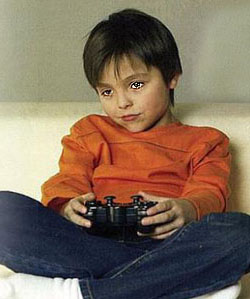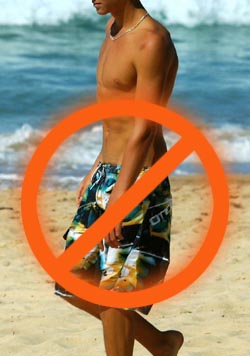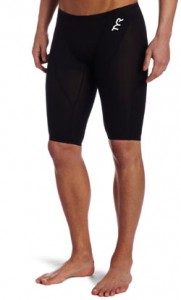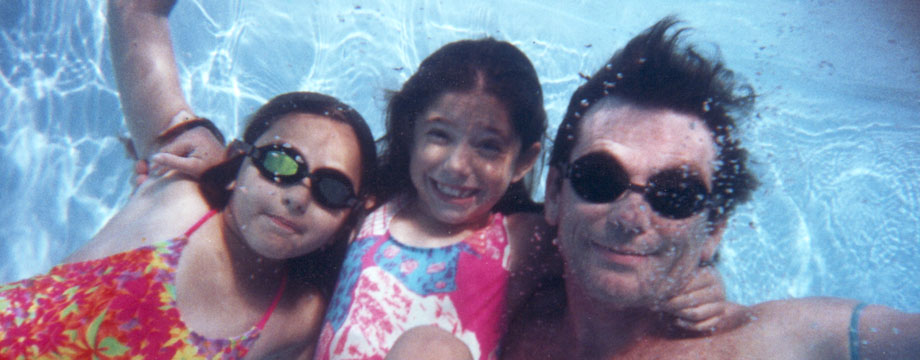As a private instructor, many of my students have already taken lessons at the YMCA, Red Cross, or through other “learn to swim” programs. Virtually all of these students had failed to learn to swim at a level where the parents could be confident the child won’t drown if they fall into a pool or off a dock. Here are my personal observations on why the child didn’t learn what their parents expected.
1. Too Much Structure
Structured lessons as presented by the YMCA, Red Cross, etc. tend to emphasize developing many skills that can be “checked off” a list to designate a specific competence level. This is fine—a solid principle for education. But I think they go overboard.
For example, the Red Cross Water Safety Instructor’s Manual (2009) has checklists for “Learn-to-Swim” at six levels. At Level 1, here are 2 typical items for check-off (click here for full Level 1 list):
- Back Glide: Demonstrate, with support, at least 2 body lengths
- Back Float: Demonstrate, with assistance, at least 3 seconds
At level 1, almost every listed skill is not really a skill–assistance and support are allowed. If a back glider has support, what difference does it make whether they go 2 body lengths or 20? So even though there are many “check-offs”, little has been achieved. As the levels advance, actual skills are eventually tested, but the buildup is very incremental. More examples:
At Level 4, the student is expected to swim butterfly for 15 yards, but is only required to tread water for 2 minutes! This is “out of whack”. Any experienced waterman would agree that the ability to calmly tread water for 10-15 minutes is far more useful than swimming butterfly (which is a stroke strictly for competition and not useful for anything else but “showing off”).
The long lists of criteria give the appearance of highly organized, sophisticated instruction. In reality, the basic skills to survive and have fun in the water are being overshadowed by checking off “meaningless” accomplishments, with an inappropriate emphasis on sophisticated stroke analysis and instruction in areas that pertain to competitive swimming only . For example, “Level 5”: teaches flip turns for swimmers who are only required to swim 50 yards. If you can only swim 50 yards, you are not even close to being ready for competition at a level that requires flip-turns!
2. Not Enough Practice

Kids need a break and fun in the water has many health (mental & physical) benefits!
An hour or two of lessons per week is time well spent for the beginning swimmer, but to really progress, another 2-4 hours (ideally 2-3 days) of practice and play will make all the difference. Why? Well, just think about other sports. Would you expect someone to learn to ride a bike or throw a ball if they only did this for 1-2 hours per week? They probably would eventually learn, but progress would be very slow and frustrating.
Swimming is unique—not only does it require learning controlled breathing and a new sense of body control, but skills that are developed on land, such as walking, jumping, and running are of no real use in the water. Entirely different skills are required to move around efficiently and stay safe in the water. The “muscle memory” for swimming is gained from practice—there is no substitute. For toddlers, time spent in a wading pool is valuable. They can learn to put their face in and have fun, without the need to journey off to a public pool that may be too deep, etc.
The takeaway here:
To think that a child can be easily “water-safe” just by taking lessons, without spending many hours practicing and playing in the water is simply wishful thinking.
3. “Big-drag” Swimsuits

What a drag! Why make learning even harder by wearing these?
In recent years, the fashion aspect of swim suits has overshadowed the functionality. Granted, not everyone should wear a “Speedo”, but if you want to go fast as you can, you simply must wear sleek, low-drag swimsuit. For beginners, wearing knee length (or longer) “board shorts” along with a t-shirt are just a real drag that will make learning to swim much harder.
Swimming is one of the rare sports where the “uniform” has a huge effect on performance. A key skill for beginners is to streamline the body (e.g. front glide) and “feel the water”, whether that is the “pull-push” that you do when stroking or the drag that may come from poor body alignment (bottom dragging). With the big suits, a huge amount of drag is introduced, and it isn’t predictable. Trying to learn basic floating and swimming with these outfits is a real handicap. It takes a great deal of energy to overcome this drag.
As a comparison, imagine how silly it would be to train for track and field while wearing heavy work boots. Or if you were learning to ride a bike, would flat tires help?
For best results, I would advise parents (and swim program directors) to get your students into some “jammers” (i.e. longer Speedos for boys) or a decent racing suit. They will learn much faster, and they can always put on the baggy stuff once they have mastered basic swimming and water survival.

“Jammers” combine low-drag and modesty.

